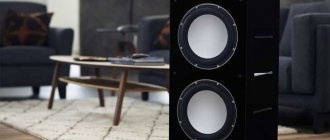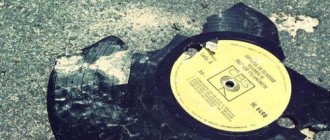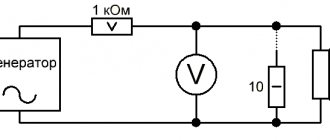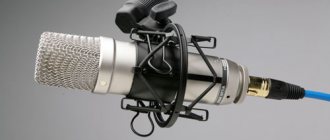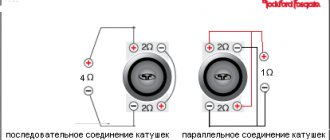Over time, the speaker may become weak, the sound may come out wheezing, but this is not yet a reason to throw it away. You can seal the speaker and eliminate defects on your own, just by studying a little information on this topic. You don't have to go to a workshop for this. It is enough to disconnect the suspension, clean the product from foreign objects and assemble all the components using the appropriate adhesive material for the problem.
Glue selection
When choosing glue for speakers, pay attention to its composition and scope of application. Take the appropriate one, taking into account the nature of the damage.
- Diffusor SL is a universal adhesive consisting of one component. Its main constituent element is polychloroprene. Originally created to correct defects in dynamic loudspeakers. A good choice for assembling speakers. Thanks to special technology, this composition forms a colorless, neat, high-strength seam. It sets within two hours, complete drying is completed after a day, and then you can use the speaker for work. The choice of specialists involved in the repair of subwoofers.
- DKD is a modern choice of adhesive material. Its composition is distinguished by a single-component structure with low viscosity. Used to restore the turns of the winding enameled wire necessary for gluing the voice coil. Complete drying takes about two to three hours, and can be accelerated with a hair dryer.
- Akfi 705 is suitable for quick assembly. It is distinguished by its versatility. This two-component composition is suitable for quick speaker repairs. Well proven for rubber and plastic surfaces.
- Interbond is a two-component viscous composition based on ethyl-2 cyanoacrylate. Used for repairing centering washer, coil gluing, flexible leads.
Manifestation of wheezing
Here the car owner will be helped by his hearing. You don’t have to graduate from music school or have perfect pitch to recognize the wheezing pattern of a car speaker system. There are often several of the most common situations associated with wheezing in an audio system. Problems may appear as:
- wheezing of only one speaker;
- simultaneous wheezing of all speakers;
- sudden occurrence of a problem;
- gradual increase in wheezing from minor interference to strong extraneous sounds;
- formation of wheezing when working at minimum volume;
- the appearance of wheezing when the system is turned on at maximum volume.
Generally speaking, the main culprits for the appearance of extraneous sound in the form of wheezing in the operation of audio systems in cars are moisture, dust and frequent listening to musical compositions at maximum power. Specialists and medical experts generally strongly advise against listening to loud music. Especially when space is limited. When a person turns on music in a car, while closing all the windows and doors, the sound has an extremely negative effect on the nervous system. Loud music can damage your hearing and even damage your vision. But also using maximum power leads to gradual wear of the audio system elements, which causes that same unpleasant wheezing. Each situation needs to be dealt with separately. This way, the motorist will understand exactly what is wrong with his acoustic equipment and what to do correctly in a given situation.
Simultaneous wheezing of all speakers
It even happens that car owners install new speakers in their car, but they wheeze. The person is perplexed what to do in such a situation and why such a situation arose on new devices. Do not panic. Let's turn on the logic first. When all the speakers start wheezing at once, it is extremely unlikely that they all failed at the same time. Most likely, some speaker has started to work incorrectly and is setting the tone for all other acoustic elements in the car. And here you need to figure out what to do. A breakdown of all speakers at the same time is only possible in a situation where the driver turns the system on at maximum volume and the equipment operates under enormous loads for a long time. As a result, the coils overheat, they fall off their frame, and this is the unpleasant result. When the speaker begins to wheeze sharply, then it’s worth checking the car radio itself. When it operates for a long time at maximum power, there is a high probability of the amplifier failing.
When purchasing a car audio system, always check the quality certificates and product authenticity. Statistics clearly show that recently the number of counterfeit audio systems has increased sharply. The optimal solution would be to purchase equipment from a reputable manufacturer through branded stores that guarantee the quality and authenticity of their products sold. Take into account one more important feature in order to correctly assemble the audio system complex and not provoke premature failure of the equipment. In most cases, manufacturers put numbers on the speaker housing that indicate the maximum peak power. This is an indicator of the power that the system can withstand for a short time. Typically the figure is between 300 and 350 watts. But there is real, that is, rated or long-term power. It differs from short-term and is always less than the peak value.
Also, the cause of wheezing of all speakers at the same time can be a simple lack of voltage. Here it is worth checking the operation of the electrical equipment of the machine itself, which could fail and lose power. Or the audio system itself was selected without correctly taking into account the power available in the car. That is, the equipment consumes more than the machine can provide. For such situations, it is necessary to install a more powerful battery or generator. To determine whether there is a lack of voltage, you can simply look at the car radio screen. If the display goes dark a little when you turn up the power on the regulator, then the problem is definitely a voltage problem. But it is not a fact that it is not enough due to a weak generator or battery. The problem often lies in the contacts of the wires, which have oxidized, come loose and do not fit tightly to their attachment points.
Wheezing in one speaker
If wheezing occurs in the speakers in the car, you need to try to determine exactly how many sources of extraneous sound there are. It often turns out that only one device wheezes, while all other speakers continue to work normally. The culprit in this situation may be the car radio itself, the speaker itself, or the wire with which it is connected to the vehicle’s electrical network. Therefore, a logical question arises about how to eliminate the wheezing of speakers in a car. The solution largely depends on where the source of the problem is. Amplifiers provided on modern car audio systems most often include 4 independent amplifiers. Older versions use 2 amplifiers, while the very first models use only one. Therefore, it is possible that wheezing is provoked by only one of them, while the remaining elements perform their functions efficiently. To check this, just connect another speaker that you are sure is working. If even the new speaker makes wheezing noise, then the problem definitely lies in the radio or wiring.
When a speaker system is just being installed, it is not so difficult to damage its wiring. This usually happens when the installation is not carried out by a specialist, but by an amateur without the proper experience and knowledge. Also, the integrity of the wiring may be compromised during operation. At first this does not manifest itself in any way, but gradually abrasions form, the quality of contacts is impaired, and corrosion occurs. This leads to sound distortions, which the driver hears in the form of wheezing. If the malfunction concerns the radio, it is better to contact the experts. Sometimes repairs are quite cheap, and the problem is fixed in a few minutes. But when the device has already expired or was initially of poor quality, replacement is the best way out of the situation. Speakers and amplifiers will remain in place. Only the unit that is mounted on the front panel of the car will change.
Distortion at maximum volume
If wheezing appears at maximum volume, then there are many reasons: the tape recorder itself, the speaker system, the power supply of the tape recorder.
If the sound is distorted in one speaker, then you need to try replacing it and see the result. If all the speakers in the car are wheezing, think about it and check whether they have been exposed to moisture (it tears the diffuser, the suspension loses its elasticity if it is made of paper), whether dust could have gotten under the coil, through the torn dust cap, and whether the voltage is normal. It is also necessary to take into account such a factor as the old age of the speaker.
Of course, you can do some checks yourself, but it’s still better to contact someone who has skills in working with electronics. I hope this article has clarified for you why the speakers in your car wheeze and what to do in this case.
Wheezing at low volume
It seems obvious that the audio system will wheeze at maximum volume, since the equipment is under enormous loads and sometimes simply cannot withstand them. But what a surprise motorists face when the speakers in their car wheeze when the radio is operating at minimum volume. There are recommendations here as to why one of the speakers or several speakers wheezes in such a situation, and what needs to be done. Practice clearly shows that most often the column itself is the culprit. Wheezing at low volumes occurs due to breaks in the flexible electrical wiring that connects the terminals and coils. Moreover, breaks most often occur directly near the soldering point. To verify this exact cause of wheezing at low volumes, simply touch the wires. If you move the wiring a little and return full contact, the wheezing will immediately disappear. But constantly holding the wire with your hand is definitely not an option. You need to get to the broken wire and secure it properly by soldering and using insulating tape. If the wiring near the terminal breaks, the easiest way is to cut out part of the damaged wire and put a piece of a new one in its place.
Tools
It is easy to repair the column and repair the speaker yourself. For repair you will need:
- Spare gimbal.
- Brush.
- Knife.
- Glue.
- Screwdriver.
- Construction hairdryer.
- Solvent.
Procedure:
The procedure for repairing a speaker completely coincides with the algorithm for repairing a subwoofer, adjusted for dimensions.
- Remove the damaged suspension from the column. To do this, you will have to disassemble the loudspeaker: peel off the suspension from the body, disconnect the diffuser, remove the dust cap. You can make this procedure easier by heating the seams using a hair dryer. It is necessary to separate the component parts with care to avoid damage to the diffuser elements. Use a screwdriver or plastic card to remove the parts.
- Clean the diffuser basket from particles of dried glue using a solvent and degrease the gluing areas.
- Align the diffuser. You need to install it so that it has enough free movement and does not touch surrounding surfaces. To do this, use a centering washer.
- Apply glue to the contact areas of the speaker components. It is necessary to apply a small layer of glue to the diffuser and suspension using a brush.
- It is necessary to pause while gluing the elements; this is required to dry the glue to residual stickiness.
- After drying, press the suspension to the diffuser, pressing on the gluing points. Allow 15-30 minutes for initial drying of the glued surfaces. The glue reaches full strength within a day. After the required time has passed, a speaker test can be performed.
What are regular speakers?
Speakers are a simple type of radio equipment. They consist of a case and speakers built into it. There may be one speaker or, simply speaking, a loudspeaker. But in a more advanced model there may be several of them. If the speakers are the same, then they perfectly reproduce a wide range of frequencies. But often there are several different ones. If a speaker has three different sizes of speakers, then the largest one reproduces low frequencies, the middle one reproduces midrange frequencies, and the smallest one, as it is commonly called a “tweeter”, reproduces high frequencies.
How to repair regular type speakers, that is, inactive ones that do not have an amplifier built into them? It depends on what type of breakdown occurred. Since a cracked case can be easily repaired, we will not dwell on such nuances. Let's look at the breakdowns associated with the failure of the speakers, since apart from them there is nothing else to break in ordinary (non-active) speakers.
Features of adhesive speaker repair
If there is a need to apply a couple of patches of the required diameter, we glue the parts overlapping each other. You can use cardboard patches when repairing large holes. It is important to pay special attention to ensure that the diffuser does not deform during gluing; select the optimal pressing force on the patches. After 24 hours, make sure that all elements of the acoustic loudspeaker are set; if necessary, glue again. When testing the speaker, first set the volume to a low volume and then gradually increase it.
For more information about speaker repair, watch the video.
Easy cleaning of car speakers
Some car owners will find the operation of disassembling and assembling speaker systems too complicated. How to clean car speakers without disassembling them. If there are ventilation holes on the speaker housing, you can try to pull dust and mechanical particles out of the moving system using a strong vacuum.
A small diameter hose is connected to the ventilation hole. This place and free ventilation holes are wrapped with tape. The second end of the hose is inserted into the vacuum cleaner sleeve and is also sealed with adhesive tape. Next, it is connected to the output of the music system, heavy rock with an abundance of low frequencies is turned on, and the vacuum cleaner is turned on for extraction. A few minutes of work and the speaker is completely cleaned.
If you were unable to get rid of the contaminants on your own, then it is better to entrust the phone to specialists. There are two ways:
- a variety of mobile phone repair services - nowadays in any city they are presented in an assortment; due to their considerable quantity, such an “ambulance” for a telephone is usually easy to find within walking distance from home; since cleaning the speaker is not a complex operation, it can most likely be handled by almost any service center;
- specialized service centers are a more reliable option, but, unfortunately, they cannot be found for all brands of mobile phones; contamination of the speaker is not a warranty case, so the operation will be paid in any case, but you can be sure of the quality of the work performed.
The instructions must describe in detail the rules for cleaning the components of the device, deviating from which can be life-threatening. If, during the process of descaling or burning, damage to one of the elements of the device occurs and a gas leak occurs, you must immediately contact the emergency gas service.
Before proceeding with the procedures for cleaning the column, it is necessary to block access to gas and water
If, after weighing all the pros and cons, you have decided to clean the device yourself, we suggest that you familiarize yourself with industrial preparations and folk remedies that will allow you to effectively get rid of contaminants.
How to tape a subwoofer
One way to fix the tear is with glue and a paper towel. Not a perfect solution, but simple. Take a paper towel and, if it has two layers, remove one layer. Tear the paper towel to fit the size of your work surface. The paper towel should be wide enough to cover the tear, but not too large.
Take Moment glue and spread it over a piece of paper towel to go across the gap. The glue should saturate the paper towel, but not be liquid.
Apply the adhesive tissue paper to the speaker, gently pressing and smoothing it onto the speaker using a knife. Repeat this process for the back of the speaker
Wait for everything to dry and then apply matte black spray paint if you wish. This procedure can help the broken speaker fiber to come back together with the help of glue and a paper towel.
Sometimes subwoofer repairs can be quite simple, so decide whether you want to take the time to fix the speaker yourself or have someone do it for you.
Making a stealth subwoofer with your own hands
Tired of carrying a huge box in your trunk? Then the stealth subwoofer is just made for you. This unique type of case is more practical than the classic box. It doesn't sit in a square box in the middle of the trunk and takes up less space. Often, stealth is installed in the inner part of the wing, sometimes in a niche instead of a spare wheel. The minimum volume of the box that requires a 10-12 inch speaker for normal operation is 18 liters. To make a passive stealth subwoofer we will need:
- subwoofer;
- protective grille and socket for connection to the amplifier;
- wire for connecting the speaker to the outlet;
- multilayer plywood or chipboard (thickness 20 mm);
- a small piece of fiberboard;
- epoxy adhesive;
- brush;
- fiberglass;
- mounting tape;
- polyethylene film;
- wood screws;
- drill, jigsaw.
Find out what documents are needed to replace rights when changing your last name. and whether I need to take my license again.
Have you recently bought a new car? Read tips on breaking in a new car from experienced motorists.
Here https://za-rulem.org/avtotovary/pokupka-avto/byudzhetnye-krossovery.html you can learn how to properly use and care for an automatic transmission.
After choosing the place where the stealth will be installed, we empty the trunk and begin manufacturing the body. You can remove the trunk trim where the subwoofer will be installed to place it even closer to the fender. First of all, lay a plastic film on the floor of the trunk. It performs two functions at once: it protects the trunk lining from epoxy glue and allows us to make a mount to which we will screw the bottom of the subwoofer. Next, we cover the inside of the wing with mounting tape in two layers.
We cut the fiberglass into small pieces, approximately 20x20 cm. We place pieces of fiberglass onto masking tape and glue them with epoxy glue. It is better to overlap the fiberglass fabric so that there are no obvious joints and seams.
We sculpt layers of fiberglass on top of each other, simultaneously lubricating them with epoxy glue, until the thickness of the sheet reaches 10 mm (about 4-5 layers).
The material will harden in approximately 12 hours. To speed up the process, you can use a lamp. Now we cut out the bottom of the subwoofer and glue it to our body. The joint is treated with sealant or glued with epoxy resin.
In this particular case, the shape needs to be adjusted to the trunk hinges so that our homemade subwoofer does not interfere with its closing. After we cut off all the excess, we cut out the side walls and the top cover from chipboard. We make the rounded part from plywood, we did it “by eye”.
To make it easier to give the plywood a rounded shape, you must first wet it, give it the desired shape, secure it and let it dry.
Chipboard sheets must be glued with epoxy glue or sealant, and then fastened with self-tapping screws. We also glue the fiberglass box using epoxy resin, and when it dries, we fasten it with self-tapping screws.
For better sealing, you can glue the seams again. We applied another layer of epoxy glue and pressed the structure with sand to help the glue adhere better.
Next we can measure the front panel and cut it out. Using a jigsaw, cut out a circle for the speaker. In order to securely attach the front panel to the body, you need to tighten it with self-tapping screws on all sides. That is, you need to install bars on the entire inside of the panel, at a distance slightly greater than the thickness of the plywood (in our case, we attached the bars at a distance of approximately 25 mm from the edge of the panel). Thanks to this, we will be able to secure the front part at the top, bottom, sides, and most importantly, securely attach it to the rounded element.
Cut a hole in the end for the socket.
In the end, it was decided to add two more layers of fiberglass and epoxy glue to the curved part of the body for the stealth subwoofer.
We carry out the final assembly: install the socket and connect the speaker to it, but do not screw it yet. Then there are two options - paint the subwoofer, or cover it with carpet. Painting is a little more difficult, since you must first level the surface. For this we used universal putty.
We level everything with sandpaper, prime and paint. The subwoofer is ready!
Recommendations
To ensure that you do not have problems in the future when operating speaker systems, you should take preventive measures and observe the operating conditions of the equipment. It is enough to follow some rules:
- Periodically check the connection of the wires and monitor their integrity.
- Do not allow dirt or moisture to get inside the equipment's speakers.
- Make sure that the speakers and all device chips are connected correctly.
- Carry out preventative cleaning of equipment.
Simple rules that will help extend the life of your equipment and allow you to enjoy high-quality and rich sound.
Garbage coil getting caught in gap
This can also be treated, but here you will have to tinker longer and it is not a fact that you will be able to properly remove the diffuser and clean the slot from dirt, and then put it back on the glue. How can you repair the column in this case:
- Open the lid.
- Unsolder (disconnect) the wires and remove the speaker.
- We take a cotton or other rope, soak it in acetone and place it around the perimeter of the contact of the upper part of the diffuser funnel with the basket body.
- We do the same with the centering washer, since the diffuser will have to be completely dismantled.
- When the glue softens enough, carefully tear off the diffuser from the upper rim of the basket, and the spider from its bed circle.
- Remove the diffuser and clean the slot from debris. This can be done with a compressor, a vacuum cleaner, or various mechanical devices, for example, cardboard. Under no circumstances should you poke into the slots of the magnet with pieces of iron. If you scratch the surfaces of the walls, the speaker will squeak as the coil rubs against the burrs.
- When everything is clean, we reassemble the speaker in the reverse order as we disassembled it.
- After immersing the coil magnet into the slot, before firmly seating it on the glue, the diffuser should be carefully centered so that no squeaks are heard when the diffuser is immersed down. The coil should move silently in the slot.
- Next, let the glue dry for 24 hours, assemble and test. If everything sounds great, you're doing great. If not, then you're still great. At least they tried. But the speaker will have to be replaced with a new one.
A guitar string broke
Why did your string break?
Before you understand what to do in a situation where a string breaks, you need to understand why exactly it broke. Knowing why the string broke, it will be possible to avoid such incidents in the future.
On the fretboard. The situation when a string breaks on the fingerboard happens very often. This is largely due to the condition of the neck itself. It may be that its surface is hard or rough, and this can ruin a lot of strings. When it rubs against the frets and they are not soft enough, the string may break. There is a way out of this situation. If you find that a string has broken in the middle of the neck of your guitar, and the problem is that the frets are too hard and the string simply wears off on them, you can try lubricating the frets with grease or oil. On the top threshold. It may break not in the middle, but, for example, at the top sill. This happens quite often. And before you wonder what to do if it breaks on the top sill, ask yourself why this happened. Most likely, if a guitar string breaks at the nut, where the strings are attached to the soundboard, it is because the nut has a sharp, jagged edge. In order to avoid such problems, on high-quality guitars the saddles are carefully rounded, and there will be no more breakdowns. The metal should not be too loose, otherwise it increases the likelihood that it will break. The shape of the deflections, which are designed to fasten the strings to the nut, is also important. In order to avoid such situations, you can try using graphite lubricant - it will help reduce friction. You can prepare it from simple pencil graphite mixed with household oil.
It is important that you cannot use either car or vegetable oil - this can harm the instrument. This recipe was shared by the guitarist of the famous Russian rock band "Aria" End of the string
If it breaks at the end, then most likely it is not your fault, but the manufacturer's fault. As a rule, only low-quality models break at the end. If the breakdown occurred while it was being pulled, it is also most likely the manufacturer’s fault, since high-quality models will never break when being pulled.
How to carry out repairs yourself?
When a string breaks and there is no spare, you can almost always remedy the situation by tying it up. However, almost is not always one hundred percent. If it is torn in the middle, on the neck, then it is almost always impossible to tie it, as this will lead to deformation of the sound.
But if the break occurs in a part where it does not need constant clamping, it can be tied. There are two main methods used - twisting and tying. Which one is better is difficult to say, but you need to look at the situation - this is indisputable. There are situations when it is easier to twist two parts than to tie them, and vice versa, it is easier to tie them than to twist them.
It is most convenient to twist on the saddles, closer to the edges, but if it is torn closer to the central part, tying it will be much easier and more convenient.
Bonding technology
- Bend both parts of the string into parabolas
- Put one under the other
- Hook parabolic arcs onto each other
- Tighten the knot.
Advantages and disadvantages
Bondage, of course, has its obvious and secret advantages and disadvantages. First, about the pros.
- Obviously, there is no need to buy a new model - this one will do just fine for a while.
- When tied correctly, the guitar's sound remains the same.
- If only one string breaks, you don’t need to buy a whole set.
- Even though it was not possible to tie up the torn places, you can save the scraps; sometimes they come in very handy the next time there is a tear - they can replace one of the too short parts.
But musicians also note some significant disadvantages of tying strings:
- It is very difficult to tie them on a bass guitar, because there they are much stiffer than regular classical guitar models.
- If you connect them on a bass guitar, in most cases the sound will deteriorate greatly.
- Sometimes this can be inconvenient when playing, especially if the string breaks in the middle.
- Already bandaged models last a very short time; there is a high probability of them breaking near the knot.
In general, if we talk about tying, it is worth saying that this measure is most likely needed for a short period of time, when the string breaks in conditions where it is not possible to replace it. If there is one, then it would be much better to replace the torn one with a new one.
How to glue the sleeve and centering washer to the diffuser?
It is best to glue the sleeve into the diffuser immediately after winding the coil. The final drying of the coil can be postponed until later.
If the coil leads must be laid on the outside of the diffuser, then they can be carefully laid and glued to the sleeve before gluing the latter into the diffuser.
However, in order not to spoil the appearance of the speaker, it is better not to remove the leads from the outside of the diffuser, but to glue the new coil leads to the inside of the diffuser. In addition, there is no need to remove the dust cap.
Expand the image to full screen to see the full-size video.
To obtain a reliable adhesive connection, it is necessary to ensure a minimum gap between the hole in the diffuser and the outer surface of the sleeve. If the gap is large, then an additional paper gasket should be glued to the sleeve.
When gluing the sleeve into the diffuser, glue is applied to both contact surfaces.
As the glue hardens, the pair being glued is rotated, and the position of the connecting surface of the suspension is controlled by some stationary reference point.
If the suspension is too elastic and its shape is distorted during dismantling, then you can orient yourself along the line where the suspension meets the diffuser.
When the glue has dried, you can remove the sleeve from the template.
Before soldering the coil leads to the flex leads, you need to make sure that the coil leads will be connected in the correct polarity. The polarity of the connection must match the markings or color of the sockets.
The positive terminal of the speaker is indicated either by an arbitrary mark, or by a “+” (plus) sign, or by the red color of the socket.
If you wound a speaker coil, and the north pole of your speaker magnet is at the bottom, then the beginning of the coil is connected to the negative terminal, and the end is connected to the positive terminal.
| Get the Flash Player to see this player. |
If there is no initial data for determining the polarity, then before final assembly it is enough to lower the moving system into the basket, connect a direct current source (0.5 ... 1 Volt) to the coil terminals and see in which direction the diffuser moves. If a plus is connected to the positive terminal, then the diffuser should move upward.
Click on the picture to see a three-second video.
Then the coil leads are laid without a gap on the surface of the sleeve and diffuser and soldered to the flexible leads. After which the leads, soldering points and places where flexible leads are attached are glued with glue.
You can remove varnish from the coil terminals and at the same time tin them using this simple device.
To make it, you need to heat a paper clip with a soldering iron and melt it into an Aspirin (salicylic acid) tablet.
After the glue securing the coil terminals has dried, a centering washer is glued to the diffuser.
When gluing the centering washer, both contact surfaces are covered with glue. While the glue is curing, a weight is placed on the centering washer.
Before final assembly, dry the coil as described.
How to seal a subwoofer speaker, if you find a hole in its diffuser (there are many reasons, carelessness, children playing pranks, and more), do not rush, throw out the old one, or look for a new speaker to replace it. Such damage can be easily and successfully repaired without consequences or noticeable changes in the operation of the subwoofer speaker.
How to seal a subwoofer if a problem arises, we will help you now.
Device and troubleshooting
Subwoofer 5, 1 consists of a speaker, speaker, and amplifier, as well as a power supply:
- An acoustic speaker usually fails only from mechanical damage.
- Failure of the dynamic head is caused by the contact of its coil with an audio frequency with a power for which the head is not designed, or with constant voltage, which causes the coil to burn out
- When listening to a speaker with amplification at maximum power, you will encounter the problem of wear (rupture) of the driver cone
- If the speaker breaks, it must be replaced, since rewinding the coil or repairing the subwoofer diffuser is a delicate, painstaking job and it is very difficult to do it efficiently so that the sound does not deteriorate
First you need to find out which element of the subwoofer failed:
A frequent cause of failure of the power supply is impaired heat exchange. From the huge amount of dust that gradually accumulates inside the unit, parts overheat, which is why they fail. Using a tester, we check whether there is voltage at the output of the power supply; if there is no voltage, then you can be sure that that the reason lies precisely in it When inspecting the parts of the power supply, you may find swollen capacitors or a blackened winding of the transformer. Using a soldering iron, unsolder the damaged parts, replace them with new ones purchased in the store. A burnt-out transformer can be rewound with your own hands if you already have experience in such a matter, if you have no experience, it is better not to take it on, or to practice on something that you won’t mind. If there is voltage at the output of the power supply, and it does not deviate from the specified norm, then you can move on to the low-frequency amplifier Board with amplifier - place where, as a rule, there are a lot of transistors and microcircuits. Using a tester, carefully touch the outputs of the microcircuits, measure the voltage. When they are cold at normal supply voltage, there is probably no current in them, it should warm them up. If the microcircuits, on the contrary, are hot (they are usually slightly warm during normal operation), this is a sign of a malfunction. By the same analogy, we check all capacitors, swelling, a hot surface are symptoms of their unstable operation. The diffuser can be sealed with a back strip of tape, (preferably thin cardboard), the edges of the glued material must be thoroughly coated with rubber glue so that you have glue protruded on the surface of the diffuser, repair of the subwoofer suspension (see How to seal a subwoofer so as not to buy a new one) this is completed. Dry it for a day, then check the operation at low and medium power, if the sound is bad, it is easier to replace the entire speaker than to bother with replacing the diffuser Replacement - this is a long, labor-intensive process that does not provide any guarantees of high-quality sound, plus - one careless movement, and the new diffuser will also be destroyed
https://youtube.com/watch?v=pH52dUs4sWA
